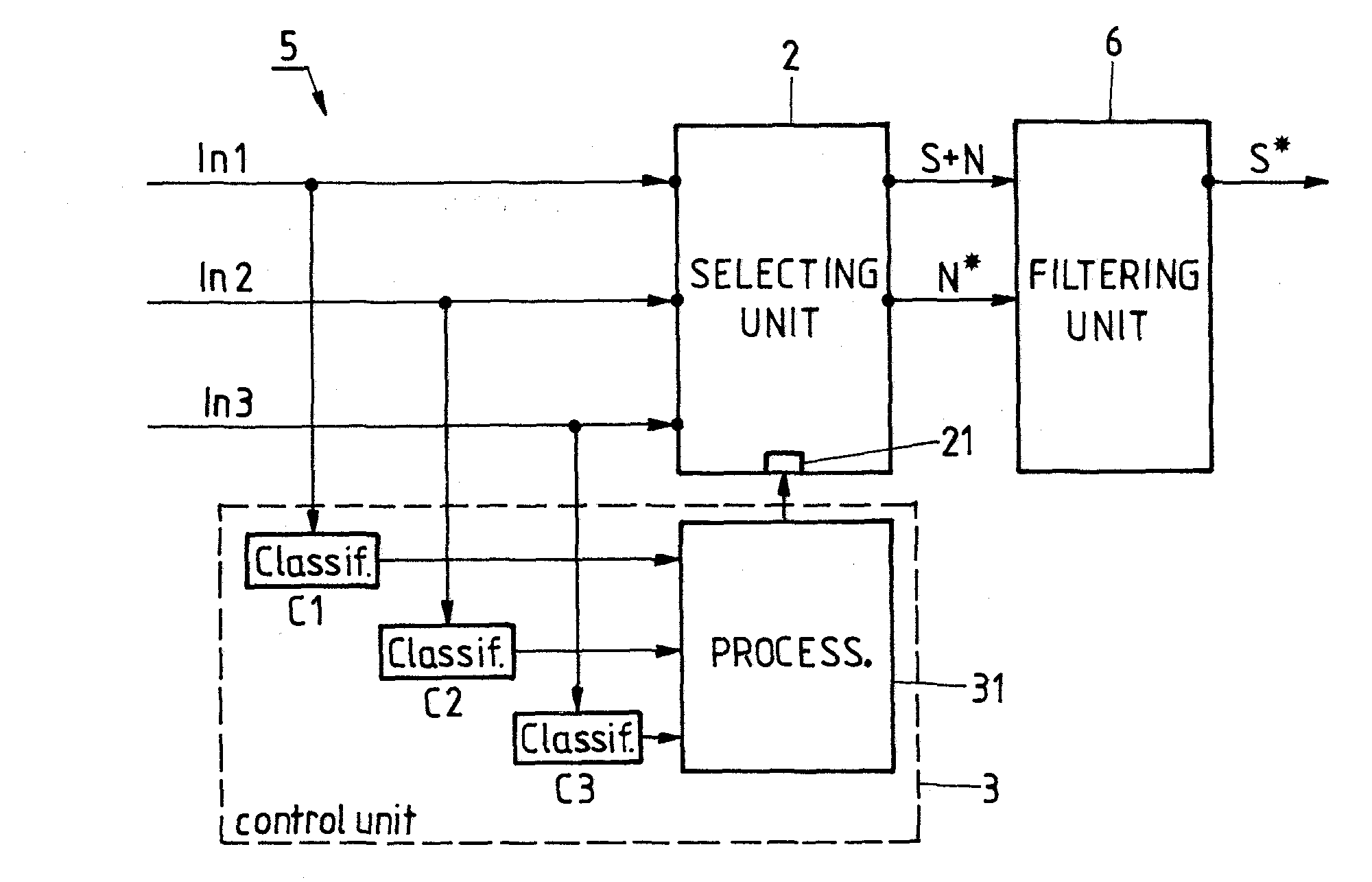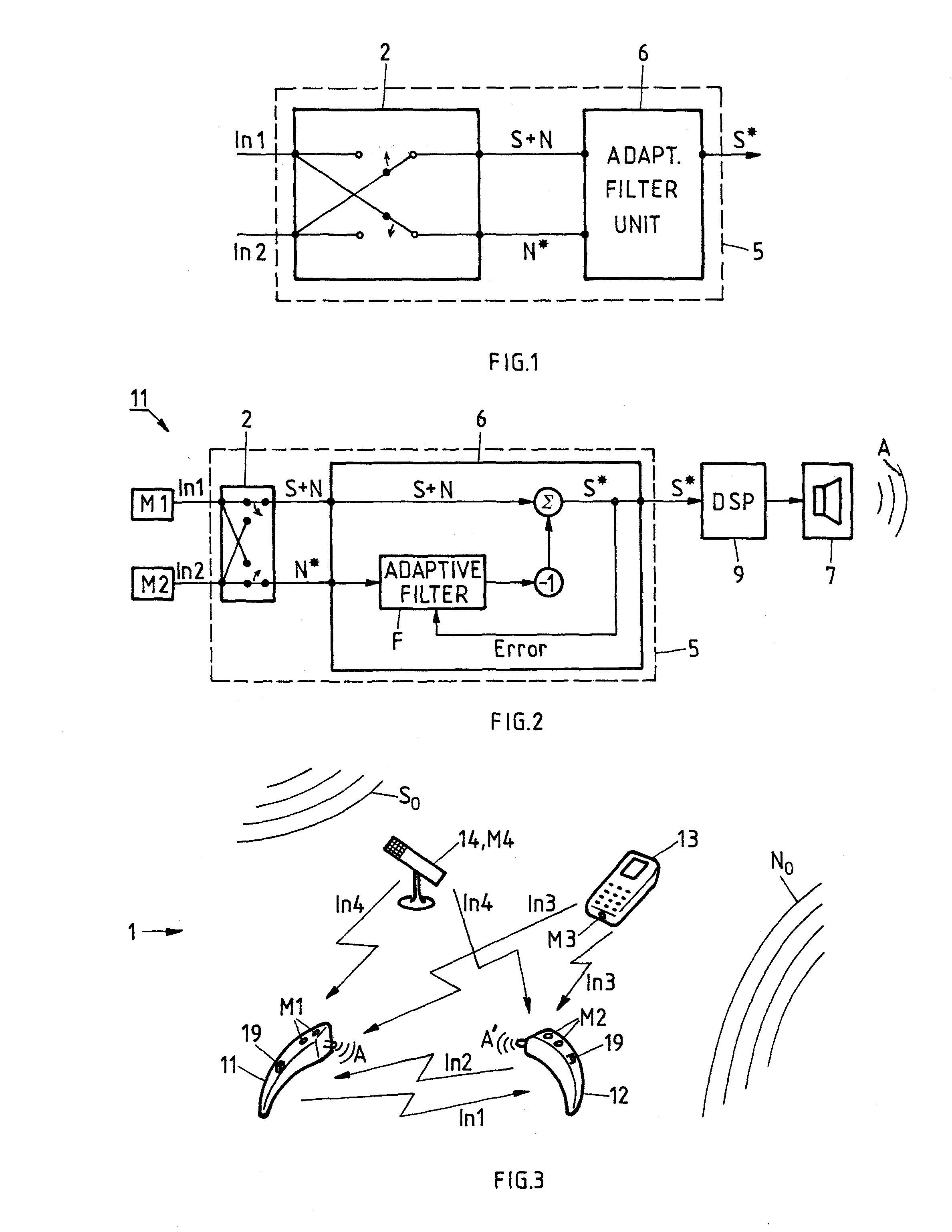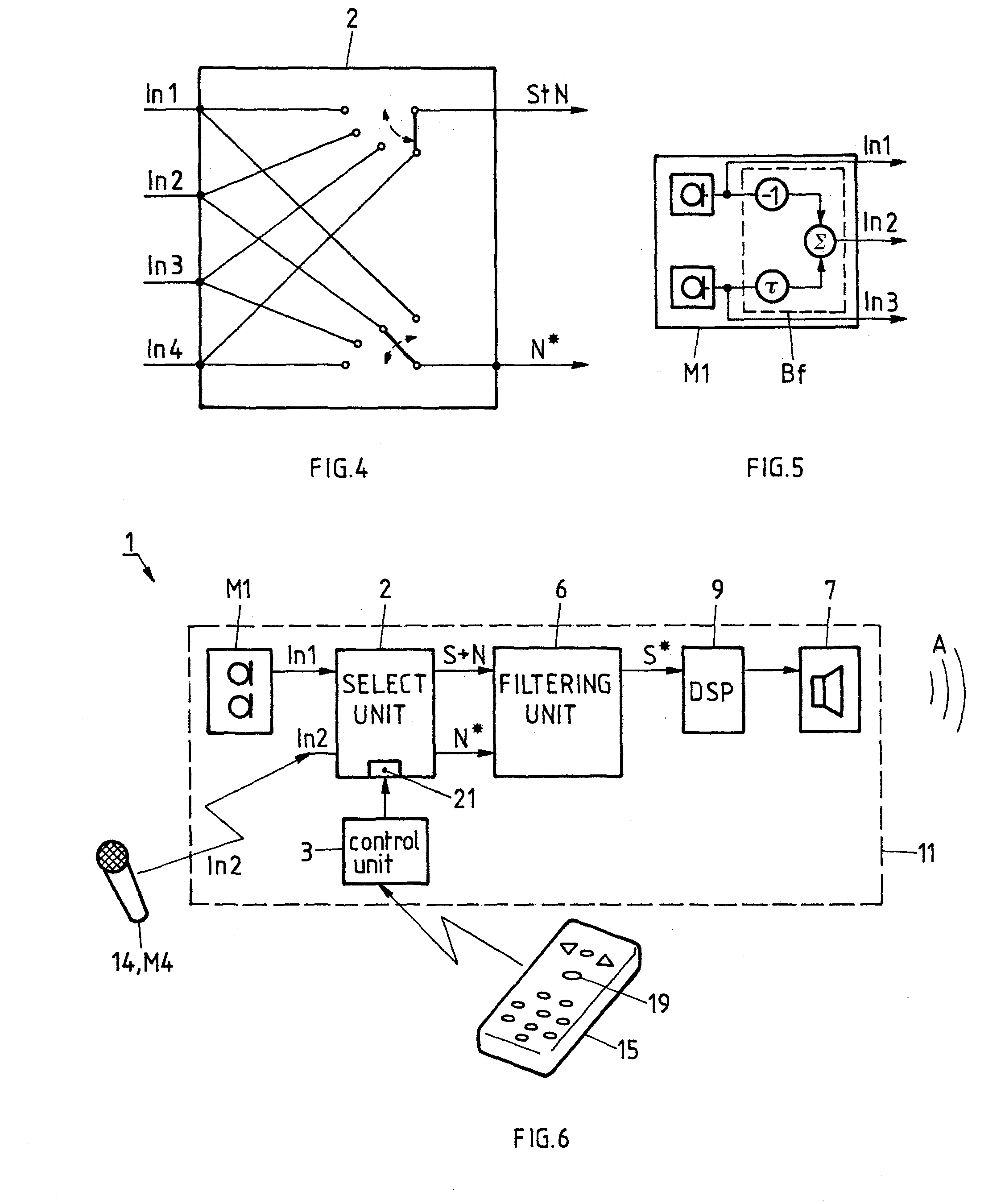Hearing system with enhanced noise cancelling and method for operating a hearing system
- Summary
- Abstract
- Description
- Claims
- Application Information
AI Technical Summary
Benefits of technology
Problems solved by technology
Method used
Image
Examples
Embodiment Construction
[0092]FIG. 1 illustrates in a schematic diagram of an adaptive noise canceller 5 according to the invention. It comprises a selecting unit 2 and, operationally connected thereto, a filtering unit 6. The filtering unit 6 comprises an adaptive filter and receives two input audio signals: an S+N-audio signal and an N*-audio signal. The S+N-audio signal, also referred to as primary signal, is composed of a desired signal and an unwanted signal, the latter also referred to as noise or noise signal. The N*-audio signal is an audio signal, which approximately corresponds to said noise signal or resembles said noise signal, and which is used as an estimate for said noise signal. It is also referred to as noise reference.
[0093]By means of the adaptive filter, an S*-audio signal is obtained from said S+N-audio signal and said N*-audio signal. The S*-audio signal is an approximation towards said desired signal.
[0094]The selecting unit 2 receives two input audio signals In1, In2 and allows to s...
PUM
 Login to View More
Login to View More Abstract
Description
Claims
Application Information
 Login to View More
Login to View More - R&D
- Intellectual Property
- Life Sciences
- Materials
- Tech Scout
- Unparalleled Data Quality
- Higher Quality Content
- 60% Fewer Hallucinations
Browse by: Latest US Patents, China's latest patents, Technical Efficacy Thesaurus, Application Domain, Technology Topic, Popular Technical Reports.
© 2025 PatSnap. All rights reserved.Legal|Privacy policy|Modern Slavery Act Transparency Statement|Sitemap|About US| Contact US: help@patsnap.com



